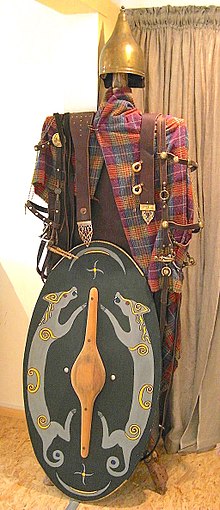
Back Gesats Catalan Gaesati German Gaesatae Finnish Gésates French Gaesatusok Hungarian Gesati Italian ガエサタエ Japanese 가이사타이 Korean Gesatai Lithuanian Gesetas Portuguese

The Gaesatae or Gaesati (Latin Gaesati, Greek Γαισάται) were a group of Gallic mercenary warriors who lived in the Alps and near the river Rhône in the 3rd century BC. They fought against the Roman Republic at the Battle of Telamon in 225 BC, and later in 221 BC.[1][2]
Polybius and Plutarch describe the Gaesatae as mercenaries called in from Transalpine regions by the Insubres and the Boii, who enticed them with promises of considerable plunder. They disappear from historical accounts after the campaigns in Cisalpine Gaul, around the time the Allobroges begin to appear in the records.[3] Although no ancient author establishes a direct link between the two groups, some scholars have postulated that the Allobroges may be identified as descendants of Gaesatae.[3][4][5]
Apart from these references in the context of the invasions, the Gaesatae are seldom mentioned. Strabo and the late Suda lexicon are among the few to treat them as a distinct people instead of a group of warriors. However, most scholars theorize that the Gaesatae were not a single ethnic group but rather bands of Gaulish warriors, often from mountainous or less fertile regions, who hired themselves out for warfare. Their leaders, referred to as "kings" (using the Greek term basileus), appear mostly as war chiefs motivated by the prospect of spoils.[3]
- ^ Barruol 1969, pp. 305–307.
- ^ Lucas 2009, p. 12.
- ^ a b c Lucas 2009, pp. 16–17.
- ^ Cite error: The named reference
:0was invoked but never defined (see the help page). - ^ Bocquet 2009, pp. 35–36.